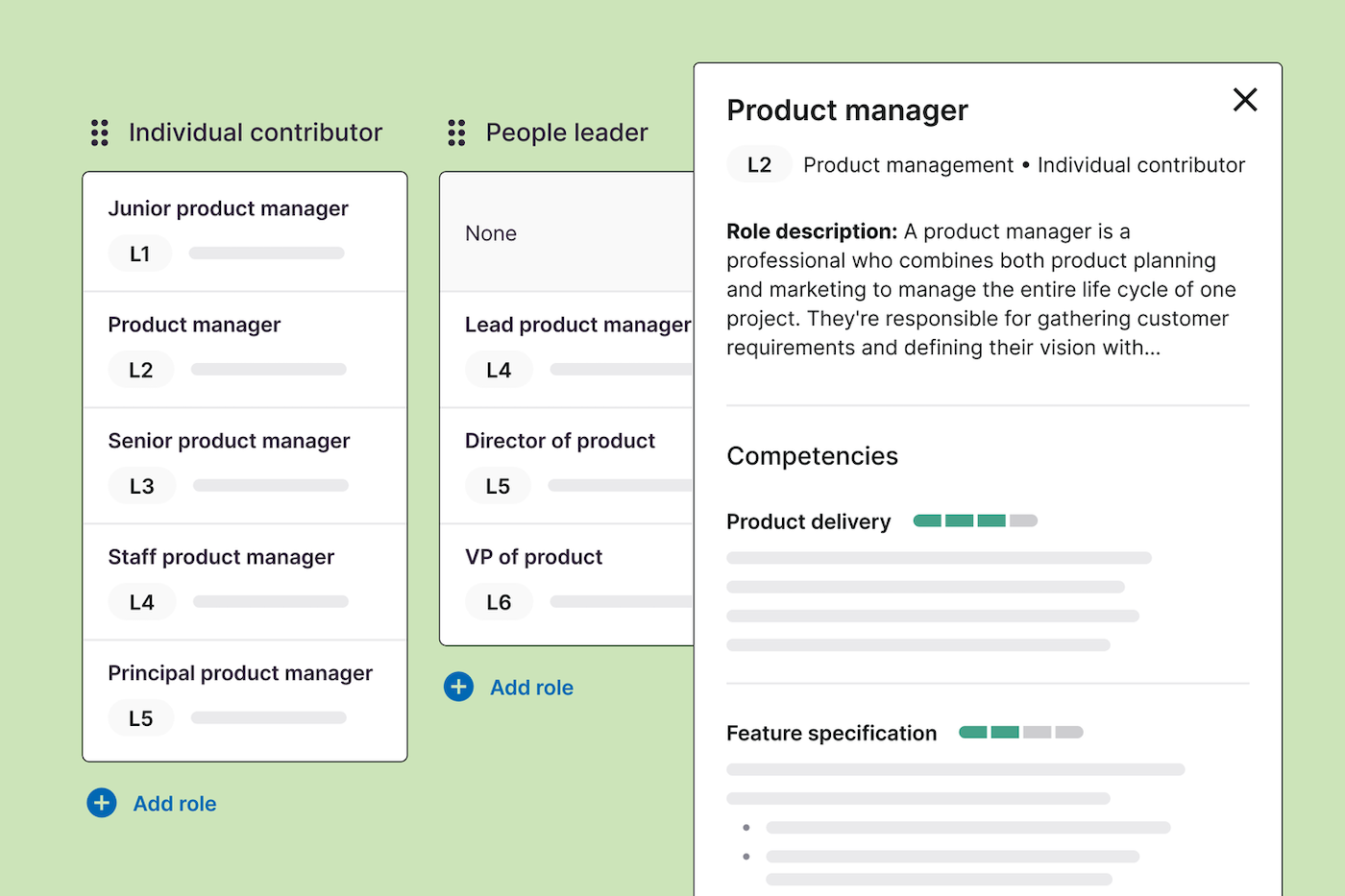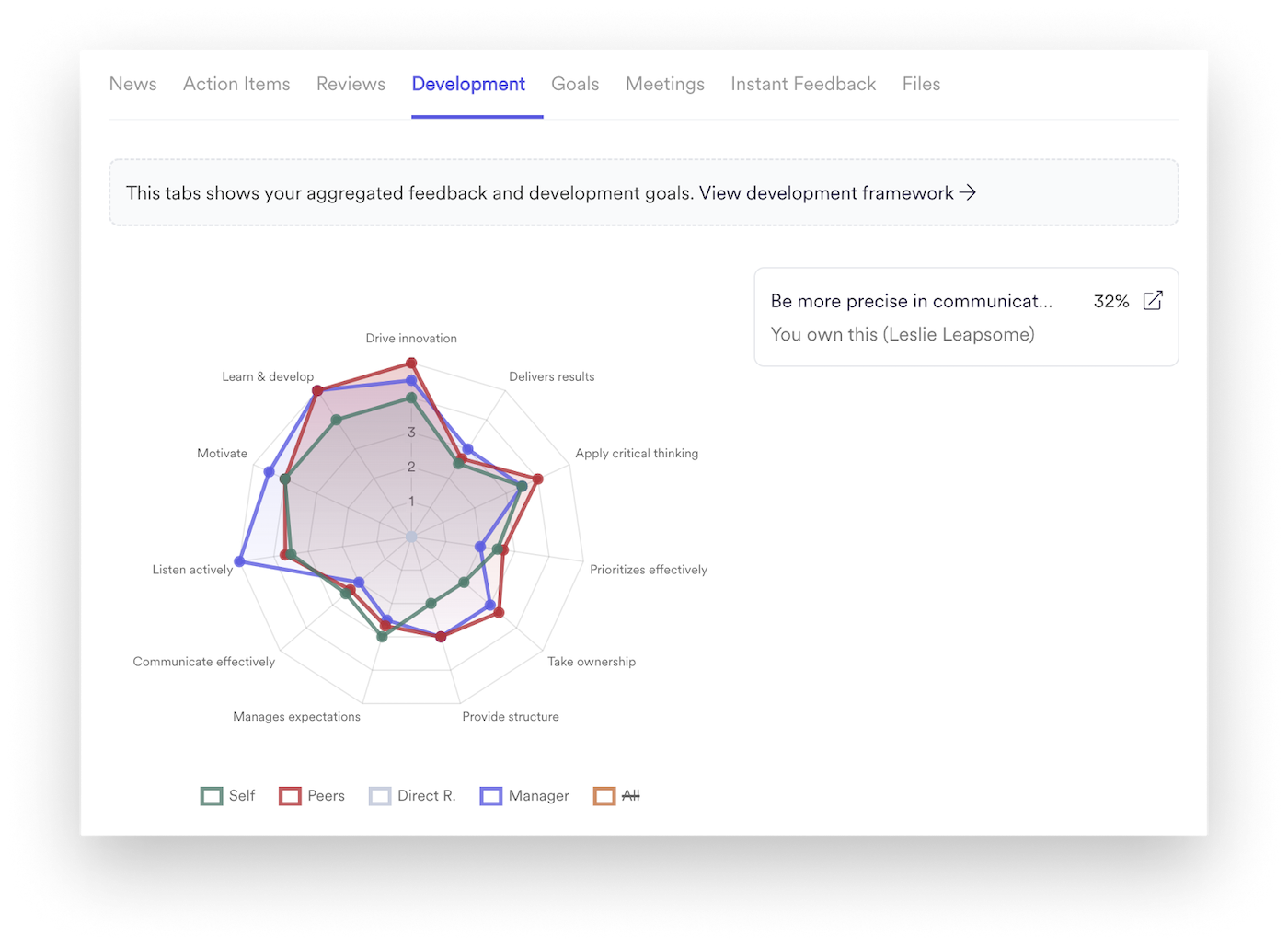Key takeaways
In this article...
What are performance review biases?
Many of us unknowingly make assumptions about other people based on details like their name, age, gender, race, educational background, or speaking pattern. This hidden judgment is called unconscious bias — it’s an instinctual response that isn’t harmful on the surface, but it can have harmful consequences if not kept in check.
When unconscious bias seeps into the performance review process, companies may miss out on opportunities to develop and retain good employees. Therefore, business leaders and HR teams should be aware of the different types of performance appraisal biases that may impact their review outcomes so they can combat them proactively.
10 types of performance review biases
Some types of unconscious bias to watch out for include affinity bias, recency bias, confirmation bias, negativity bias, primacy bias, proximity bias, central tendency bias, leniency bias, contrast bias, and halo bias.
1. In-group, affinity, or similarity bias
Human beings have a natural preference for people who look like them and come from similar backgrounds. In-group, affinity, or similarity bias may pop up if you subconsciously favor an employee who shares similar interests, identities, or experiences.
For example, you may feel a stronger sense of connection with one person because you’re both parents, went to the same university, or spent time volunteering for the same nonprofit.
In many cases, this type of bias also overlaps with the idiosyncratic rater bias, or the tendency to over- or undervalue certain traits because of the rater’s own skills and perception.
2. Recency bias
Recency bias is the tendency to judge people based on recent events and interactions rather than their long-term performance records.
For example, if an employee recently made a mistake or spoke to you in a less-than-professional manner, these events may cloud your judgment and cause you to review their performance more harshly than you would have before the event occurred.
This type of bias also shows up in self-reviews: Employees may score themselves in a more severe way if they feel particularly defeated by a recent error they’ve made, despite stellar past performance.
3. Confirmation bias
People seek out information that confirms what they already believe, even if they believe it unconsciously. For instance, if you believe people with blue eyes aren’t detail-oriented, a spelling mistake in a blue-eyed employee’s presentation deck may lead you to write them off as sloppy.
4. Negativity bias
Negativity bias is a type of bias that can develop through one-on-one interactions, but it also easily spreads by word of mouth, making it particularly harmful in the workplace.
Consider a situation in which a colleague tells you one of your direct reports made a rude comment toward them. You may be more likely to perceive and review that direct report negatively, even if you’ve never heard about or seen any other negative behaviors from them.
Also read: 7 Warning Signs of an Unhappy Employee
5. Primacy bias
Primacy biases develop when managers remember and think back on the first information they learned about their direct reports. With primacy bias, if an employee nervously makes a bad first impression during their first week of work, you may overlook any improvements they make and the good work they do in the future.
6. Distance or proximity bias
The proximity or distance bias has become increasingly common with hybrid and remote workforces.
With this type of bias, an employee may receive a better review outcome than they deserve if they work in the same office as or sit near their manager — their opportunities for one-on-one interaction outside of meetings give them an edge.
In contrast, a remote worker who only interacts with their boss via messages and scheduled video calls may not develop the rapport necessary to receive unique growth opportunities or more favorable performance reviews.
7. Central tendency bias
The central tendency bias is another bias type that may show up in manager evaluations, peer feedback, and self-reviews. With this type of bias, there is a reluctance to give extremely high or low scores on rating scales, with the assumption that most people should fall in the middle of a scale.
This means low performers may receive average scores that make them appear as though they are performing better than the data indicates. On the flip side, high performers may receive middle-of-the-road scores that do not fully reflect the quality of their work.
8. Leniency bias
Leniency bias most often shows up with “nice” managers and employees. Under this type of personal bias, managers give a more positive review than an employee’s performance merits simply because they enjoy interacting with this colleague or are afraid of sharing critical feedback.
On the opposite end of this spectrum, managers may fall into the trap of severity or strictness bias: judging employees with an undeserved lower score simply because they still have room for improvement.
9. Contrast bias
With contrast bias, an employee’s performance may look better or worse depending on how other team members are performing.
For example, if you’re working on a sales team with a rep who has achieved more than double their sales goals for several months, their outstanding performance may cause you to unfairly review another sales rep who is consistently but just barely meeting their quotas.
10. Halo bias
The halo bias is a common bias in which an employee receives a higher rating than they may deserve in one area because they are successful in another area of their role.
As an example, a marketing manager may receive a promotion because of their creative and highly engaging social media posts even though their direct reports have frequently complained about their ineffective management style. This bias is also sometimes called the horn bias if a person is dealt with too severely because one minor area of their work is not meeting goals.
Other unconscious biases
While the unconscious biases listed above are some of the easiest to spot and correct in an employee performance review, many other types can impact review results too.
For example, DEI-related biases — such as gender bias, race bias, sexuality bias, age bias, and religious bias — are rarely admitted to but still can cause certain groups of people to face slower career growth.
Best practices to overcome performance review biases
Performance management software helps combat review bias
Even the most savvy business leaders have trouble identifying and managing bias, especially as teams grow and employees advance. Performance appraisal cycles are also typically conducted through one-on-one interactions — managers meeting with direct reports on an individual basis — and each manager brings different biases, experiences, and goals to the table during these conversations.
To combat bias at an organizational and individual level during these review cycles, it is often necessary to invest in performance management software that includes anti-bias features. Tools like Culture Amp, Quantum Workplace, Zavvy, and Leapsome help with many aspects of the performance appraisal process, including spotting and preventing bias from creeping into reviews. Anti-bias features include standardized review templates, calibration features, performance data tracking, and employee-driven feedback tools.
Explore some of these features below, then check out our Performance Management Software Guide for a full list of solutions.
Featured performance management partners
ClearCompany
Conduct better reviews, increase feedback quality, and simplify review cycle management. ClearCompany Performance Management helps you implement an employee-first approach by shifting the focus of performance reviews from evaluation and ranking to employee growth and future potential. ClearCompany helps your company drive engagement and focus with goal-planning tools while increasing the value and reducing the workload of performance review cycles.
Performance Pro
Performance Pro is a customizable, user-friendly, automated performance management platform. Save time with our customizable libraries of content from competencies to tools that help managers leave more meaningful feedback & establish smart goals. Empower your employees to pursue their own professional development, retain your top talent, provide a sense of purpose with goal alignment to strategic objectives, & truly drive an increase in performance & achievement throughout your organization.
Mesh
Mesh is a performance management platform that helps people at distributed organizations grow faster by scaling the habit of leader, manager, and peer check-ins. Its social-first interface, GenAI-enabled nudges and recommendations, and prescriptive insights assist organizations in improving their chances of hitting business goals by 4x and improving the density of its top performers from 5% to ~10-20%.





